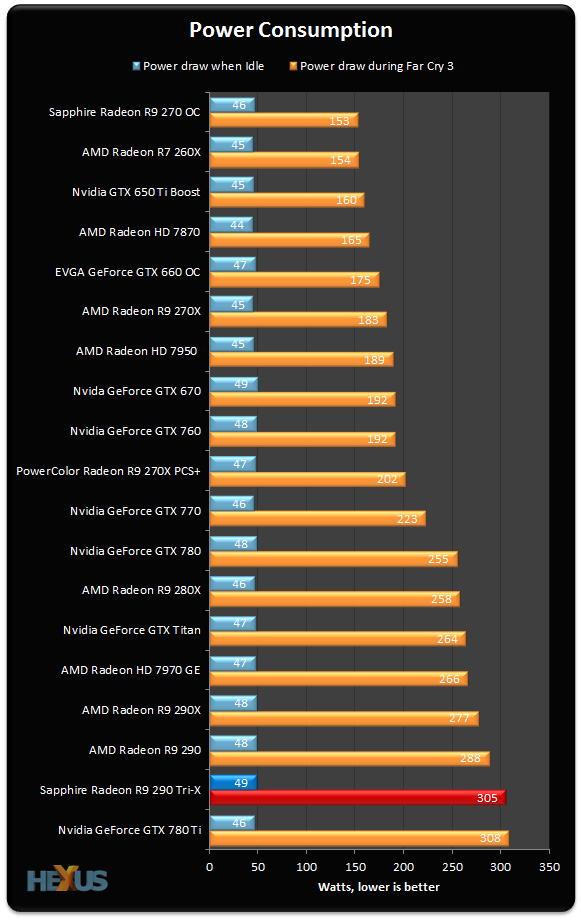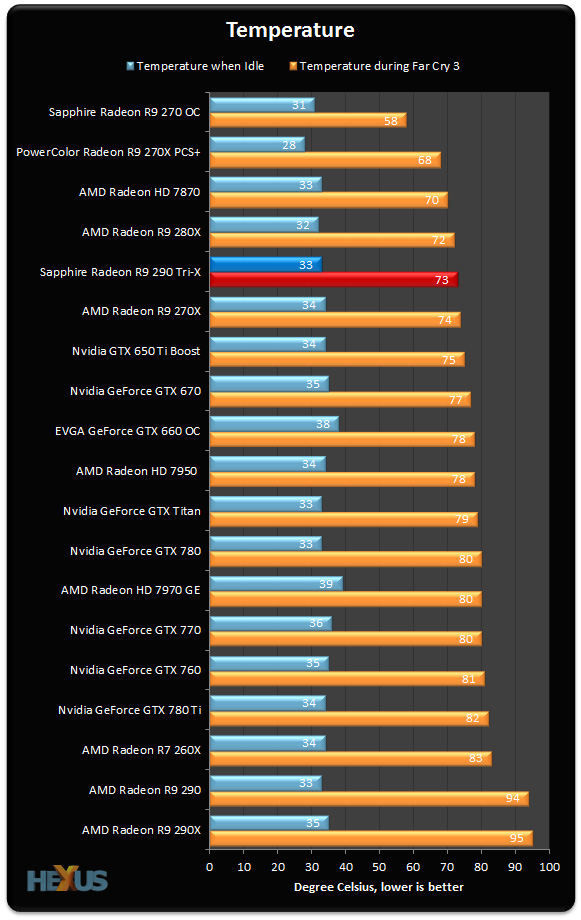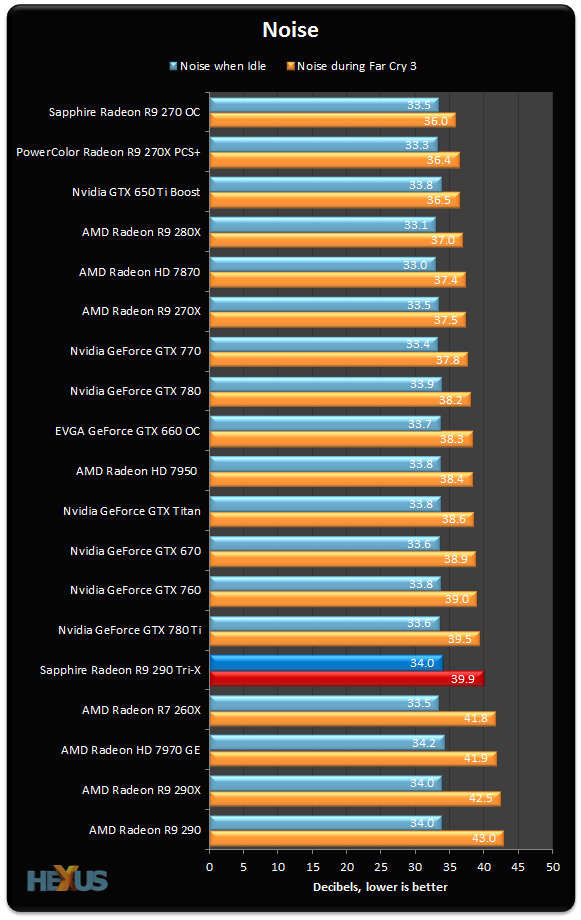Power, Temperature and Noise

In-game performance is right where we'd expect it to be - i.e. a touch quicker than reference - but this is the page that tends to define what a custom-cooled card has to offer. First off, we can see that Sapphire's factory overclock results in a modest increase in system-wide power consumption.

But here's where the Tri-X card's real strength lies. Much has been made of the quality (or lack, thereof) of AMD's reference cooler, which if you remember had the R9 290 running at a toasty 94ºC when gaming. Sapphire's triple-fan customisation sees under-load temperature drop by over 20 per cent, to a balmy 73ºC.

Despite being significantly cooler than reference, the R9 290 Tri-X is also less noisy during use. It isn't the quietest graphics card we've ever used, and in truth we didn't expect it to be, but it keeps temperatures in check without having to massively ramp-up fan speed. During our own gaming benchmarks, fan speed never rose beyond 40 per cent (roughly 2,000RPM).









